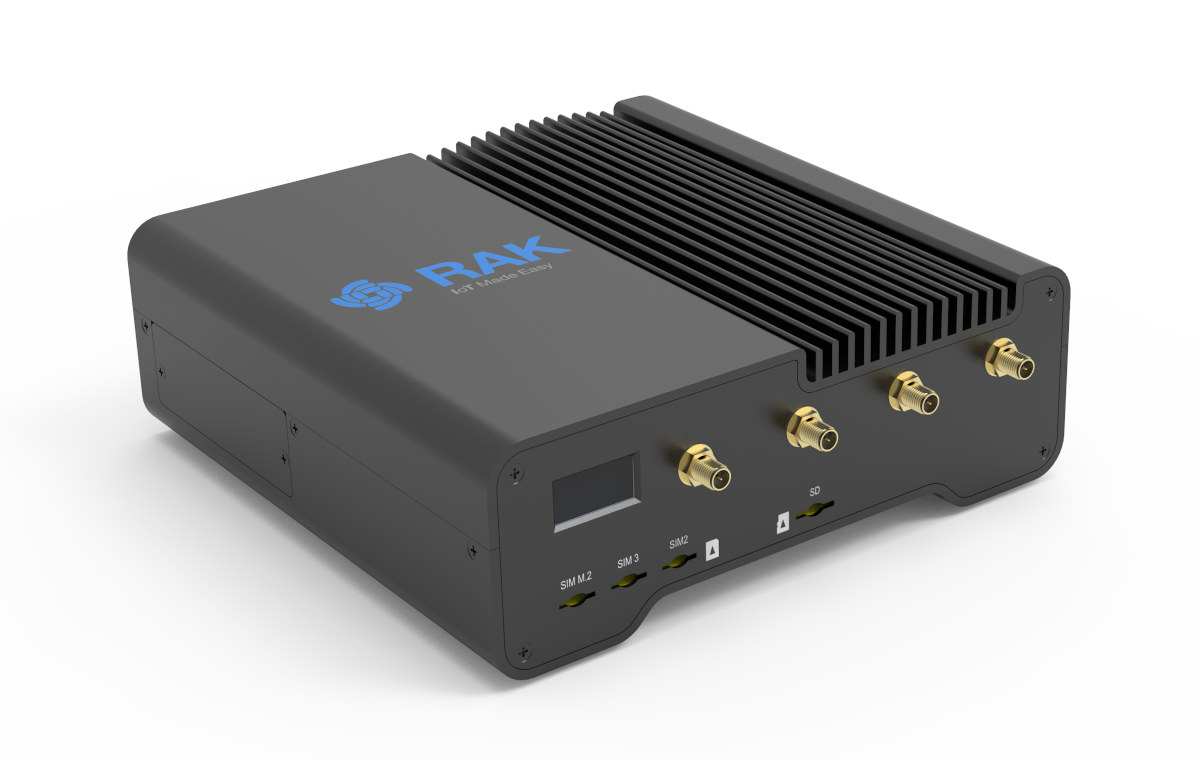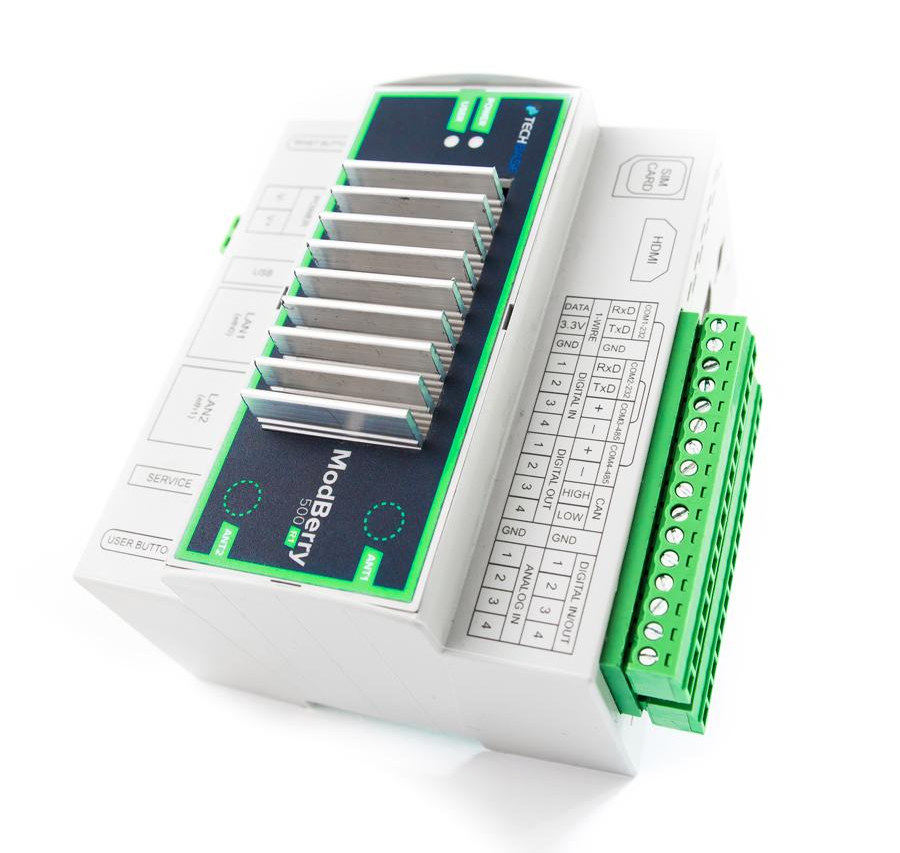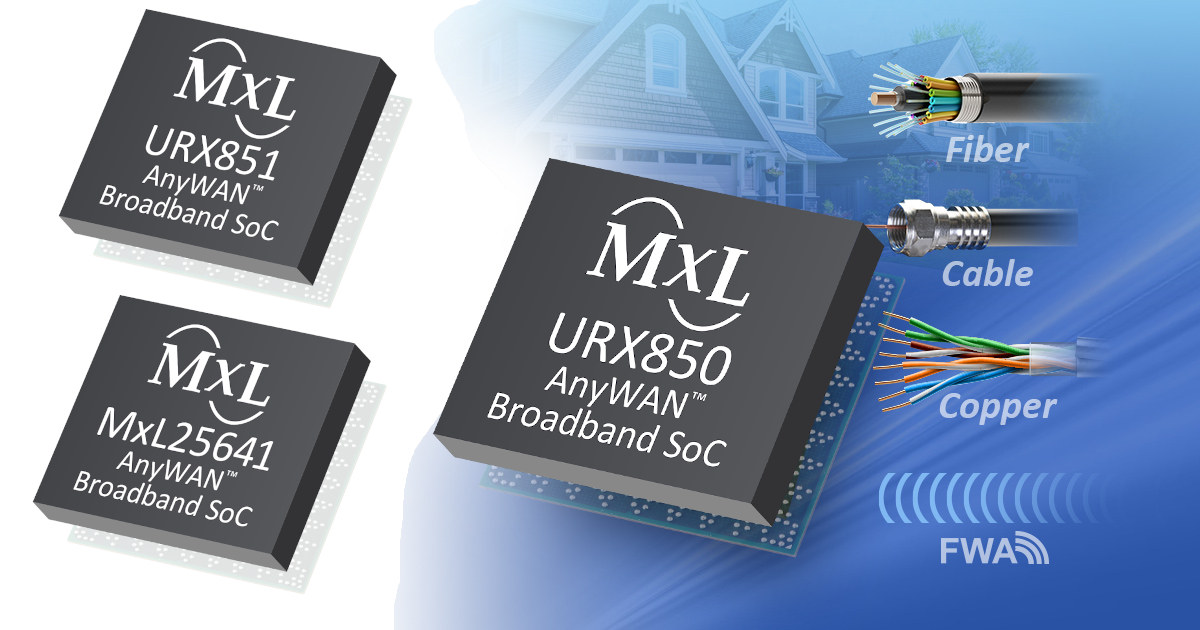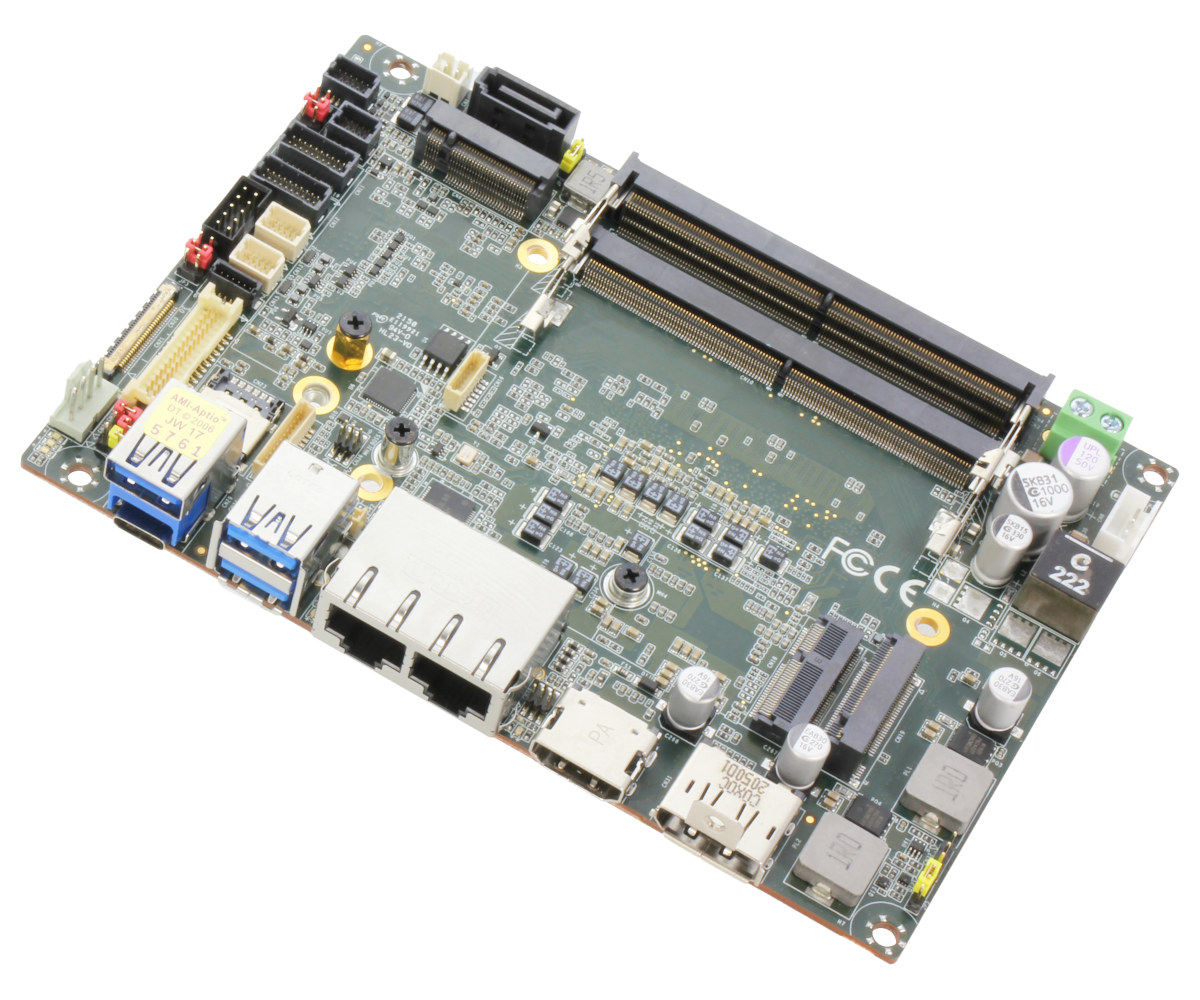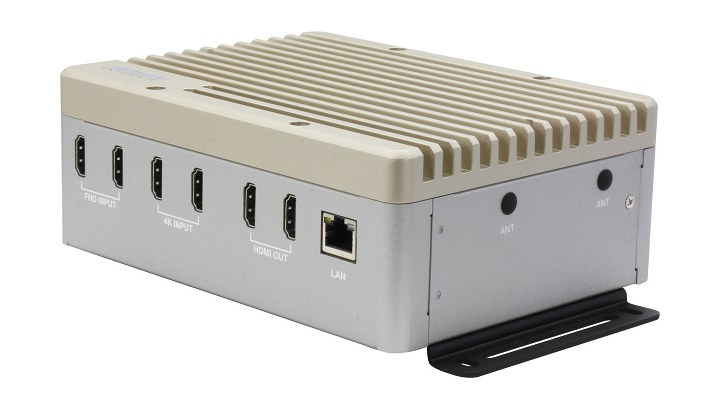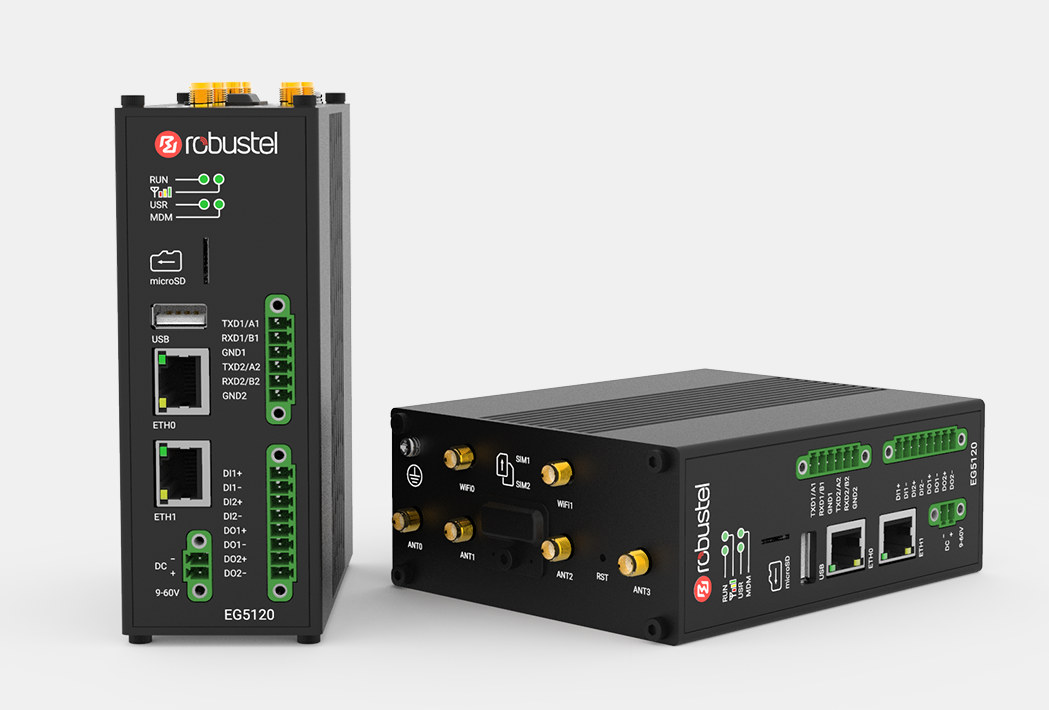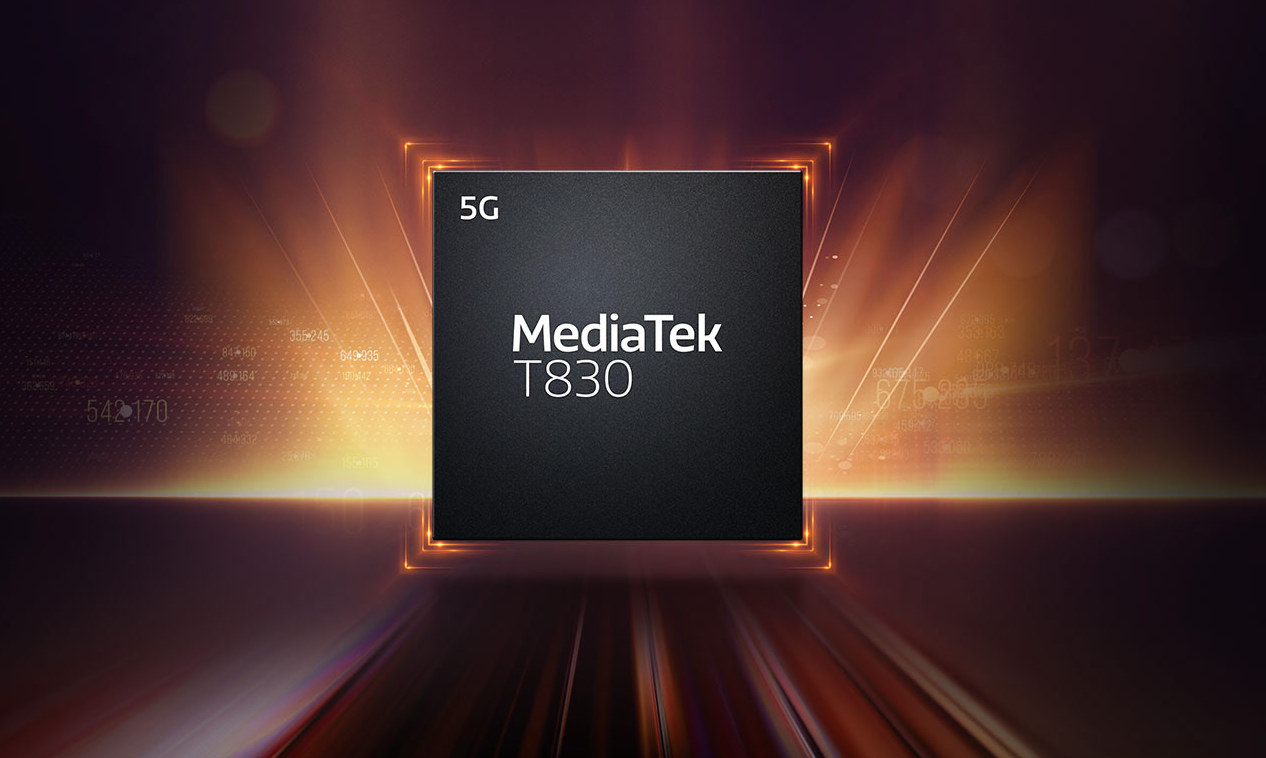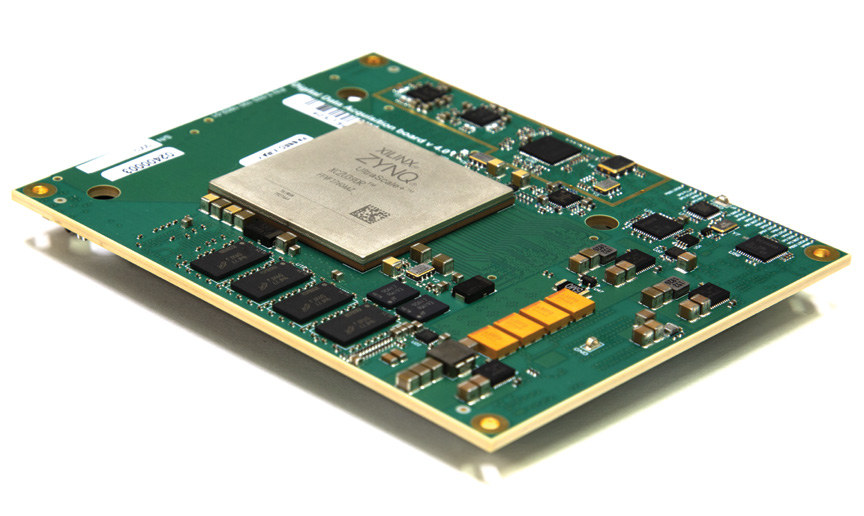RAKwireless has just introduced the WisGate Connect gateway based on Raspberry Pi CM4 system-on-module with support for Gigabit and 2.5Gbps Ethernet plus various optional wireless connectivity option that can be added through Mini PCIe or M.2 sockets as well as expansion through WisBlock IO connectors. Wireless options include LoRaWAN, 4G LTE, 5G, WiFi 6, Zigbee, WiFi HaLoW, and more, while WisBlock modules enable features such as methane sensor, motor current sensor, temperature sensor, pressure control, and valve control among many others. WisGate Connect (RAK7391) specifications: SoM – Raspberry Pi CM4 with Broadcom BCM2711 quad-core Cortex-A72 processor @ 1.5GHz, 1 to 8Gb DDR4, optional 8 to 32GB eMMC flash, optional WiFi 5 and Bluetooth 5.0 LE Storage – MicroSD card socket for CM4 Lite modules only Video Output – HDMI 2.0 up to 4Kp60, 22-pin MIPI DSI connector Camera I/F – 2x 22-pin MIPI CSI connectors Networking Wired – Gigabit Ethernet […]
ModBerry 500 R1 industrial computer replaces Raspberry Pi CM4 with Radxa CM3 module
The ModBerry 500 R1 industrial computer features a Radxa CM3 system-on-module that follows the Raspberry Pi CM4 form factor, but is powered by a Rockchip RK3566 quad-core Cortex-A55 processor instead. The ModBerry 500 CM4 DIN-rail industrial computer with a Raspberry Pi Compute Module 4 was launched in 2020, but the Raspberry Pi shortage got in the way, even for commercial customers, and Poland-based TECHBASE had to find an alternative to Raspberry Pi CM4 to offer shorter lead times to its customers, and so the ModBerry 500 R1 based on Radxa CM3 system-on-module was born. ModBerry 500 R1 specifications: SoM – Radxa CM3 module with Rockchip RK3566 quad-core Cortex-A55 processor @ up to 2.0 GHz, with 1 to 8GB LPDDR4 RAM, up to 4 to 128GB eMMC flash (up to 250 MB/s), optional Wi-Fi 5 & Bluetooth 5.0 module Storage – Optional NVMe SSD via PCIe 2.0 (mini PCIe (default) or […]
MaxLinear AnyWAN URX850, URX851, and MxL25641 Intel Atom SoCs target broadband routers and gateways
MaxLinear has just announced the availability of the first three AnyWAN broadband SoCs featuring Intel Atom cores with the MxL25641, URX850, and URX851 processors designed for 5Gbps and 10 Gbps broadband routers and gateways, usually referred to as CPEs (customer premise equipment). When I first read the news of MaxLinear releasing Intel Atom SoCs, I could not quite compute how it was possible, as I can’t remember any third-party releasing Intel processors and I thought it might be a system-in-package instead. But MaxLinear keeps calling those Intel Atom SoCs, and the reason is that the company acquired Intel’s Home Gateway Platform Division in 2020. MaxLinear AnyWAN x86 SoCs key features and specifications: AnyWAN URX850/URX851 (for 10Gbps systems) CPU – 4x Intel Atom CPU cores @ 2 GHz Memory – Up to 16GB LPDDR4 or DDR4 Storage – eMMC 5.1 flash Networking 4x 2.5GE PHYs XFI WAN Packet processor for full […]
GENE-ADP6 – An 3.5-inch SBC with Intel 12th Gen Alder Lake-P processor, DDR5 RAM
AAEON GENE-ADP6 is a 3.5-inch SBC equipped with a choice of Intel 12th Gen Alder Lake-P (and Alder Lake-U) processors and the first from the company to support DDR5 memory, of which up to 64GB can be installed through two SO-DIMM sockets. The single board computer also supports SATA and NVMe storage, up to two 8K displays (and up to four independent displays), 2.5GbE networking, USB 3.2 ports, four RS232/RS422/RS485 interfaces, and further expansion through three M.2 sockets for wireless connectivity (WiFi, 5Gm, 4G LTE…) as well as the already mentioned NVMe SSD storage. GENE-ADP6 SBC specifications: Intel Alder Lake-P SoC (one or the other) Core i7-1270PE 12-core/16-thread processor @ 3.30GHz / 4.50GHz (Turbo) with 96EU Intel Xe graphics – PBP: 28W, up to 64W MTP Core i7-1265UE 10-core/12-thread processor @ 3.50GHz / 4.70GHz (Turbo) with 96EU Intel Xe graphics – PBP: 15W, up 55W MTP Core i5-1250PE 12-core/16-thread processor […]
NVIDIA Jetson Xavier NX fanless embedded box PC features four HDMI input ports
AAEON BOXER-8256AI is a fanless embedded box PC equipped with an NVIDIA Jetson Xavier NX system-on-module, offering four HDMI input ports – two Full HD, two 4K capable -, as well as two HDMI outputs for smart healthcare equipment, digital signage, and entertainment. The embedded computer comes with 8GB RAM and a 16GB flash provided by the NVIDIA module, supports M.2 NVMe and SATA storage, Gigabit Ethernet, plus optional WiFI, 4G, and 5G cellular connectivity through M.2 sockets. BOXER-8256AI specifications: SoM – NVIDIA Jetson Xavier NX with CPU – 6-core NVIDIA Carmel Armv8.2 64-bit CPU GPU – 384-core NVIDIA Volta GPU with 48 Tensor Cores AI accelerator – 2x NVDLA deep learning accelerators AI performance – Up to 21 TOPS at 15 Watts System Memory – 8GB LPDDR4x Storage – 16GB eMMC flash Storage – MicroSD Slot, M.2 NVMe SSD socket, SATA III port Display Interfaces – 2x HDMI […]
Robustel industrial IoT gateways run Debian-based OS, offer 5G, 4G LTE, LoRaWAN connectivity
Robustel has launched three Arm-based industrial IoT gateways namely the EG5100, EG5120, and LG5100 that offer 5G, 4G LTE, and/or LoRaWAN connectivity, and runs Debian 11-based RobustOS Pro Linux operating systems The edge gateways also feature two Ethernet ports, two RS232/RS485 ports for connection to industrial devices, digital inputs and outputs for simple monitoring and control, and support a wide 9 to 60V DC power input through a 2-pin terminal block. Robustel LG5100, EG5100, and EG5120 specifications: SoC/memory/storage LG5100 and EG5100 Unnamed quad-core Cortex-A7 processor @ 792 MHz (possibly NXP i.MX 7ULP) 512MB DDR3 8GB eMMC flash EG5120 Unnamed quad-core Cortex-A53 processor @ 1.6 GHz with 2.3 TOPS NPU (very likely NXP i.MX 8M Plus) 2GB DDR4 16GB eMMC flash, microSD card socket Connectivity LG5100 2x 10/100 Mbps Ethernet ports with support for 802.3af PD feature on eth0 LoRaWAN connectivity with 1x SMA antenna connector, support for EU868, AU915, CN470 […]
MediaTek T830 to power 5G FWA routers and mobile hotspots
MediaTek T830 is a consumer premise equipment (CPE) SoC with a quad-core Cortex-A53 processor, an integrated Sub-6GHz 5G modem, hardware-based network acceleration engines,and optional support for Wi-Fi 6/6E, and son the new WiFi 7. It’s unrelated to the MediaTek Filogic 830 WiFi router SoC and instead, offers an upgrade to the MediaTek T750 5G chipset for higher performance multi-gigabit CPE products, such as fixed wireless access (FWA) routers and mobile hotspots (Mi-Fi) with up to 7 Gbps 5G speeds. MediaTek T830 specifications: CPU – 4x Arm Cortex-A55 cores @ up to 2.2 GHz GPU – Unnamed 3D GPU Networking accelerators MediaTek Network Processing Unit QoS Acceleration and Tunneling Offload Engine for VLAN / PPTP / L2TP / GRE Memory I/F – LPDDR4x / LPDDR5 Storage I/F – nMCP (NAND-based Multi-Chip Package) suggested. SPI, eMMC 5.1, and ONFI (Open NAND Flash Interface) supported Display I/F – MIPI DSI interface for up […]
XRF16 Gen3 SOM features Xilinx Zynq UltraScale+ ZU49DR RFSoC with up to 6GHz bandwidth
We’ve written about Xilinx Zynq UltraScale+ MPSoCs that combine Arm Cortex-A53/R5 cores and Mali-400 GPU with Ultrascale FPGA fabric several times over the course of a few years. But AMD-Xilinx also offers the Zynq UltraScale+ RFSoC single-chip adaptable radio platforms that support up to 7.125GHz analog bandwidth. The topic came to my attention because of an upcoming ZU49DR SoM from iWave Systems that seems to be under development but also noticed Avnet had launched a solution last year with the XRF16 Gen3 SoM featuring the same third-generation Zynq Ultrascale+ ZU49DR RFSoC with 16 RF-ADC, 16 RF-DAC channels, and 6GHz RF bandwidth. Avnet XRF16 specifications: Main chip – Xilinx Zynq UltraScale+ Gen3 ZU49DR RFSoC with Quad-core Arm Cortex-A53 processing subsystem Dual-core Arm Cortex-R5F MPCore up to 533MHz 16x ADCs, 14-bit up to 2.5 GSPS 16x DACs, 14-bit up to 9.85 GSPS (10 GSPS Available) 1 GbE, PCIe Gen1/2, SATA, USB2/3 UltraScale+ […]


